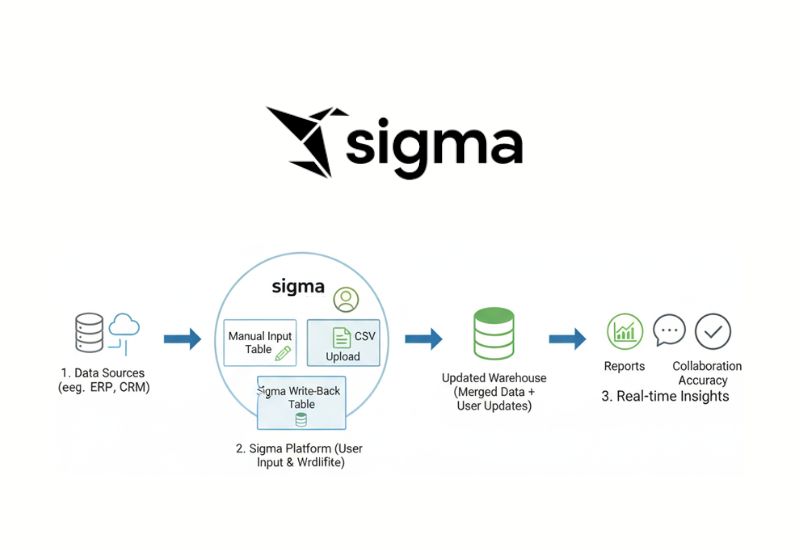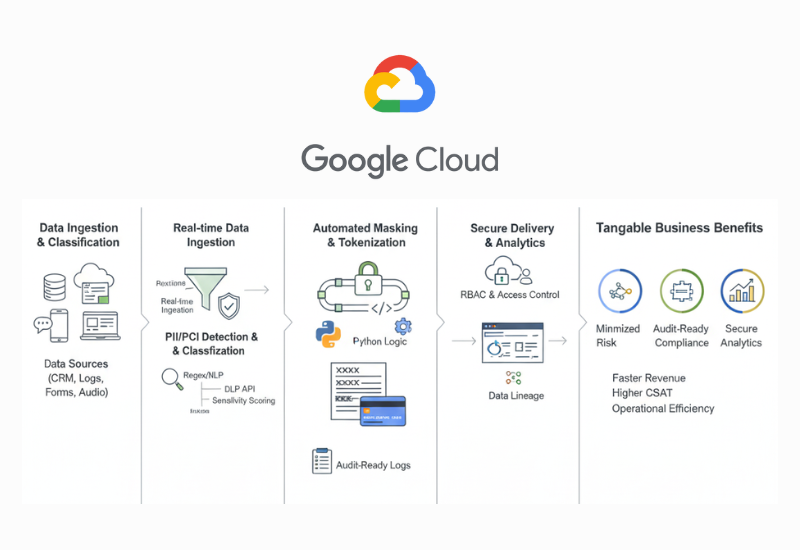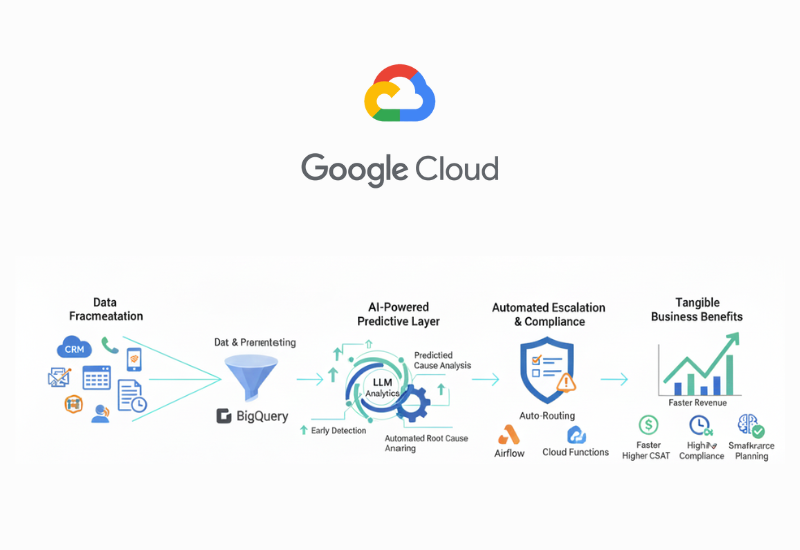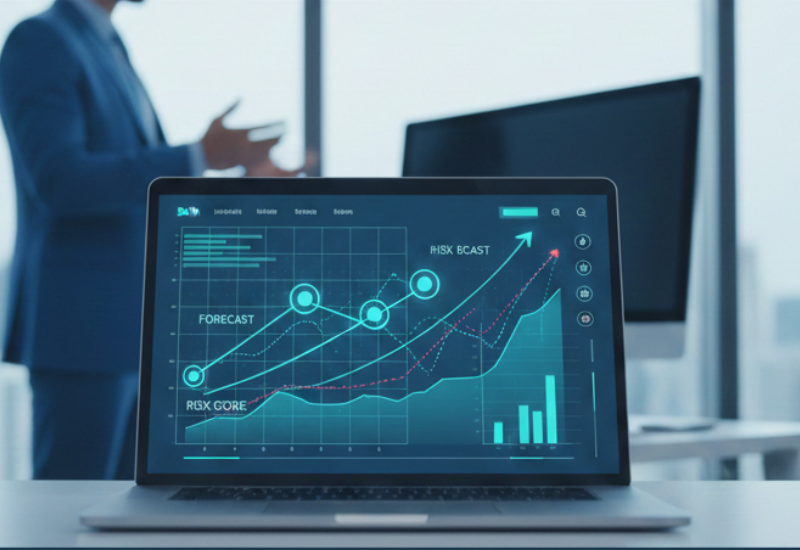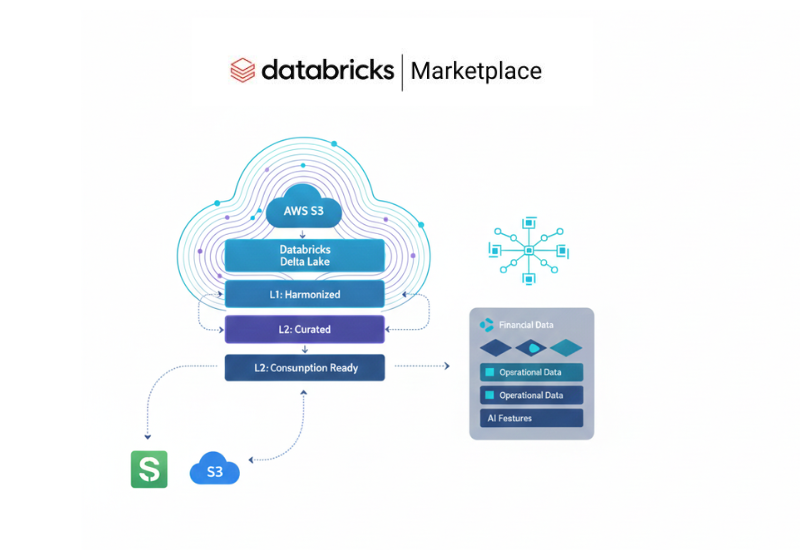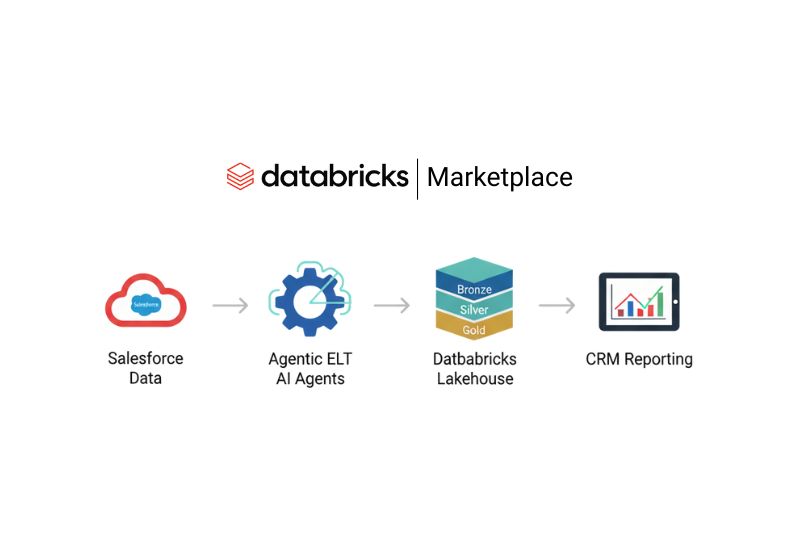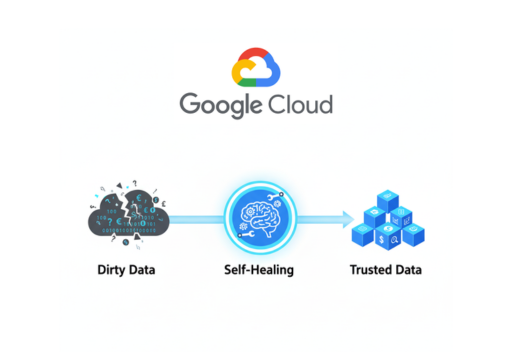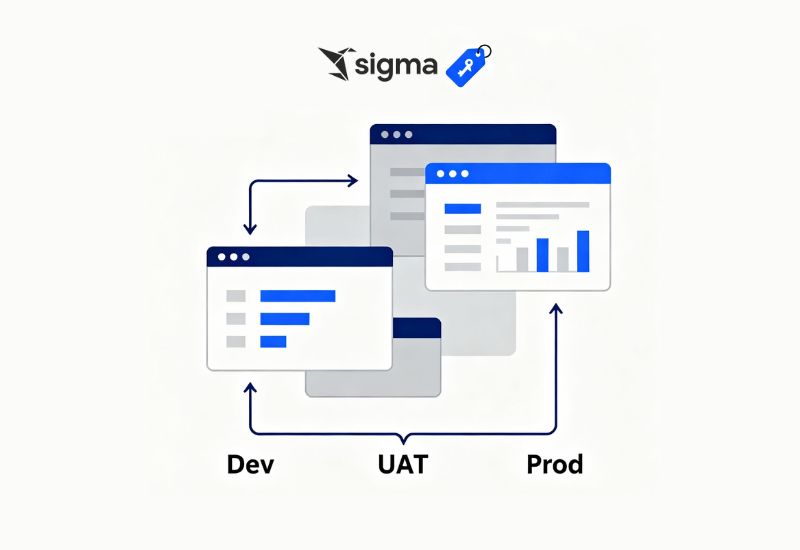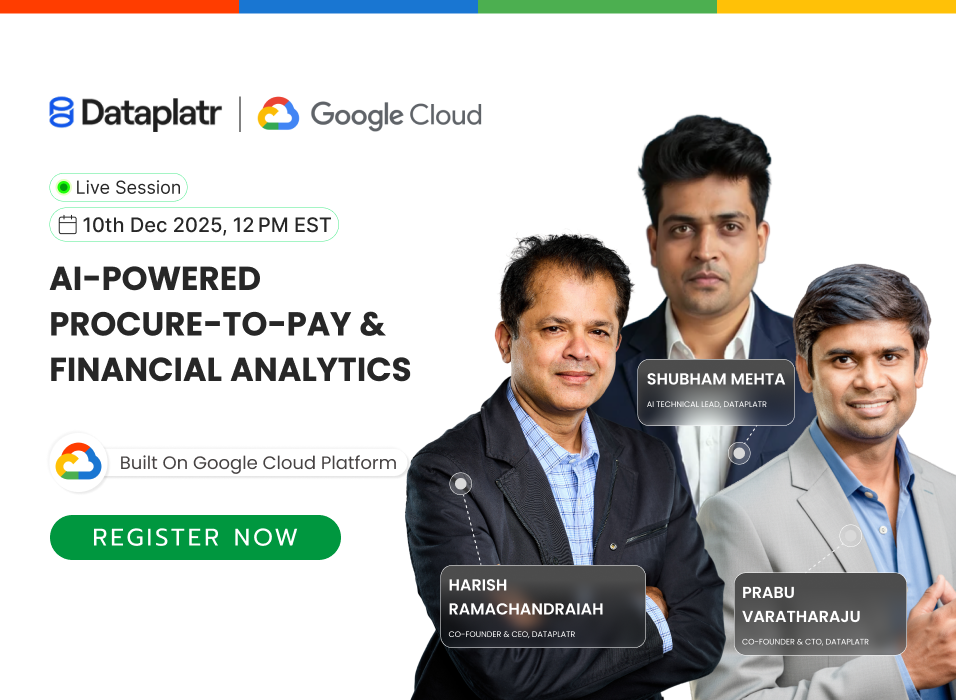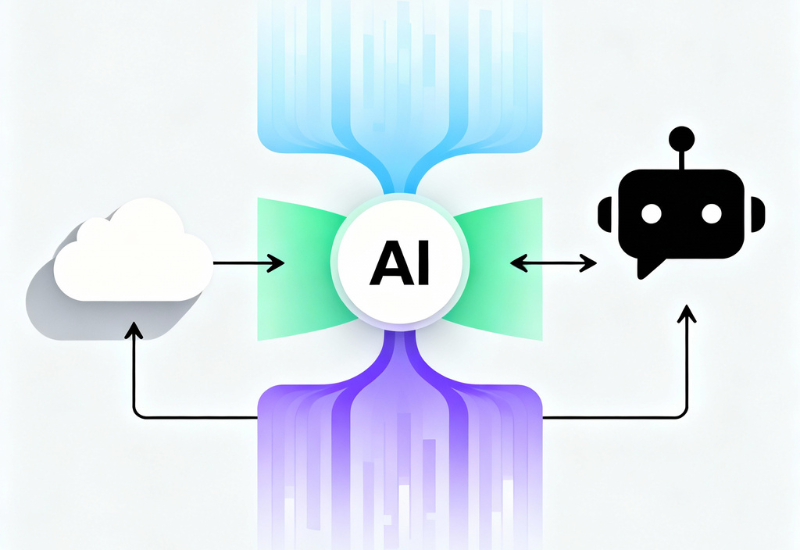What is Predictive AI?
Predictive AI refers to the use of machine learning and statistical analysis to identify historical patterns, anticipate behaviors, and forecast future outcomes across industries. Unlike descriptive analytics (which explains the past), predictive AI answers the big question: what is likely to happen next? By analyzing thousands of variables and decades of data, predictive AI can predict future buying patterns, optimize supply chains, forecast risks, and much more for businesses seeking a competitive edge.
What is AI-Powered Predictive Analytics?
AI-powered predictive analytics amplifies traditional forecasting with the intelligence of machine learning algorithms, delivering deep insights that humans alone could never uncover in vast datasets. It works by analyzing historical structured (e.g., sales, transactions) and unstructured (e.g., texts, images) data, training models to recognize complex relationships, and then applying those models to new data for reliable predictions. As the model gets more data, its predictions become increasingly accurate, a core reason many sectors are rapidly embracing this technology for smarter, data-driven decisions.
Why is Predictive Analytics Important?
Predictive analytics is a pillar of digital transformation, helping organizations make proactive, not just reactive, decisions. By embedding AI in business processes, companies can reduce costs, increase margins, boost reliability, and minimize risks. For example, predictive maintenance can alert manufacturers to failing equipment before breakdown, while predictive models help retailers optimize stock to meet future demand. Across industries, the adoption of predictive analytics drives operational efficiency, creates market agility, and boosts overall business performance.
Predictive AI vs Generative AI
While both use the power of modern machine learning, predictive AI and generative AI serve fundamentally different purposes:
|
Aspect
|
Predictive AI
|
Generative AI
|
|
Core Functionality
|
Forecasts future outcomes based on existing data
|
Creates new, original content from patterns in data
|
|
Output Types
|
Structured results, such as future sales or risk scores
|
Unstructured content: text, images, audio
|
|
Key Technologies
|
Regression, classification, decision trees, neural nets
|
Transformers, GANs, large language models
|
|
Best When?
|
Prioritizing accuracy and reliability
|
Prioritizing creativity and generation
|
|
Example Use Cases
|
Financial forecasting, inventory prediction, churn risk
|
Generating product descriptions, realistic images
|
While predictive AI is about estimating probabilities and future results, generative AI is about creating new artifacts. The two can be combined, but each has a clear strength and use case
Predictive AI Models
The engine behind predictive AI is a suite of advanced machine learning models and algorithms, each with a unique specialty:
- 1. Regression models: Regression models analyze the relationship between variables to predict continuous outcomes, such as sales or revenue. They are widely used for forecasting trends and are essential for business planning and risk assessment. These models are easy to interpret and provide clear insights into how changes in one variable affect another. Their simplicity makes them a go-to choice for many predictive analytics tasks.
- 2. Decision trees: Decision trees split data into branches based on features, making them intuitive for classification and prediction. Each branch represents a decision path, leading to a final outcome. They are useful for visualizing decision logic and are commonly applied in customer segmentation and risk analysis.
- 3. Random forests: Random forests combine multiple decision trees to improve accuracy and reduce overfitting. By aggregating results from many trees, they provide more robust predictions than single trees. This ensemble approach is effective for complex datasets and is widely used in fraud detection and stock market prediction. Random forests are known for their reliability and versatility.
- 4. Neural networks and deep learning: Neural networks and deep learning models excel at discovering complex patterns in unstructured data, such as images or text. They are used in natural language processing, image recognition, and time-series forecasting. These models require large datasets and significant computational power but offer high accuracy for challenging tasks. Deep learning is at the forefront of advanced predictive analytics.
- 5. Support vector machines (SVM): SVMs are powerful for classification and regression in high-dimensional spaces. They work by finding the optimal boundary between data points, making them effective for complex datasets. SVMs are widely used in text classification, image recognition, and bioinformatics. Their ability to handle large feature sets makes them a valuable tool in predictive analytics.
- 6. Clustering: Clustering groups similar data points together, helping to explore and segment datasets. It is often used as a pre-step to prediction, identifying natural groupings in data. Clustering is useful for customer segmentation, anomaly detection, and market research. It provides insights into data structure and supports targeted analysis.
The choice of model depends on the problem logistic regression for churn prediction, time series analysis for demand forecasting, and deep learning for sentiment analysis, for instance.
Predictive AI Examples
Predictive AI is already powering innovation in every major sector:
- 1. Retail & E-commerce: Accurate demand forecasting, dynamic pricing, and personalized marketing based on user preferences.
- 2. Finance: Credit scoring, fraud detection, and stock market forecasting.
- 3. Healthcare: Predicting patient risk, aiding in treatment personalization, and resource allocation.
- 4. Manufacturing: Predictive maintenance of machinery, forecasting supply chain disruptions.
- 5. Telecommunications: Churn prediction, network optimization.
- 6. Logistics: Route optimization and demand forecasting for transport.
Challenges of Predictive Analytics
Despite its transformative potential, predictive analytics presents several challenges:
- 1. Data Quality & Quantity: Poor data quality or insufficient data can lead to unreliable predictions. Incomplete, inaccurate, or biased data undermines the effectiveness of predictive models. Ensuring high-quality, comprehensive data is essential for accurate forecasting. Data preprocessing and cleaning are critical steps in predictive analytics.
- 2. Model Complexity & Interpretability: Complex models can be difficult to interpret, making it hard to explain predictions to stakeholders. This "black box" issue is a concern in regulated industries where transparency is required. Balancing model complexity with interpretability is crucial for trust and compliance. Simpler models may be preferred in some cases.
- 3. Integration & Implementation: Integrating predictive analytics into existing systems can be challenging. Legacy systems may require upgrades and robust data pipelines. Successful implementation requires careful planning and IT expertise. Seamless integration ensures that predictive insights are actionable and impactful.
- 4. Ethical & Privacy Concerns: Predictive analytics raises ethical and privacy issues, especially with sensitive data. Ensuring models are fair, transparent, and respect user privacy is both a technical and legal necessity. Organizations must address these concerns to build trust and comply with regulations. Ethical considerations are paramount in predictive analytics.
- 5. Skill Gap: There is a shortage of professionals skilled in building, deploying, and interpreting predictive analytics solutions. Organizations need experts in data science, machine learning, and domain knowledge. Bridging the skill gap is essential for successful adoption and innovation. Training and hiring are key to overcoming this challenge.
Benefits of Predictive Analytics
Businesses that effectively use predictive AI enjoy a host of bottom-line advantages:
- 1. Enhanced Decision-Making: Predictive analytics provides data-driven insights that sharpen business strategies and reduce guesswork. By anticipating trends and risks, organizations can make informed decisions. This leads to better outcomes and improved performance. Predictive analytics is a cornerstone of modern decision-making.
- 2. Operational Efficiency: Automating forecasts and risk analyses saves time and reduces errors. Predictive analytics streamlines processes and optimizes resource allocation. This increases efficiency and lowers operational costs. Organizations can focus on strategic initiatives rather than manual tasks.
- 3. Personalization: Predictive analytics enables tailored marketing, personalized recommendations, and individualized medical care. By understanding customer preferences, businesses can deliver targeted solutions. This enhances customer satisfaction and loyalty. Personalization is a key benefit of predictive analytics.
- 4. Risk Management: Predictive analytics helps organizations proactively identify and mitigate risks. By forecasting potential threats, businesses can take preventive measures. This reduces losses and enhances resilience. Effective risk management is a major advantage of predictive analytics.
- 5. Competitive Advantage: The ability to anticipate trends and respond quickly gives organizations a competitive edge. Predictive analytics enables innovation and agility in dynamic markets. Businesses that use predictive insights outperform competitors. This advantage drives growth and market leadership.
Predictive Analytics Techniques
1. Classification Modeling - Assigns data points to predefined categories, commonly using algorithms like decision trees, random forests, and logistic regression.
2. Ensemble Methods - Combines multiple models (such as bagging, boosting, and stacking) to improve prediction accuracy and robustness. Examples include Random Forest and Gradient Boosted Models.
3. Bayesian Inference - Uses probability theory to update predictions as new data becomes available, making it ideal for scenarios with uncertainty and evolving information.
4. Time Series Analysis - Predicts future values based on historical time-dependent data using models like ARIMA, Exponential Smoothing, and newer deep learning approaches such as the Temporal Fusion Transformer (TFT).
5. Data Mining - Involves extracting patterns and insights from large datasets, often using techniques like association rule learning and anomaly detection.
Dataplatr empowers organizations to use these predictive AI models and techniques for actionable insight, operational excellence, and future-ready strategies. With the right approach, predictive analytics is not just a technology, but a business imperative for those aiming to lead in tomorrow's data-driven's data-driven world.

